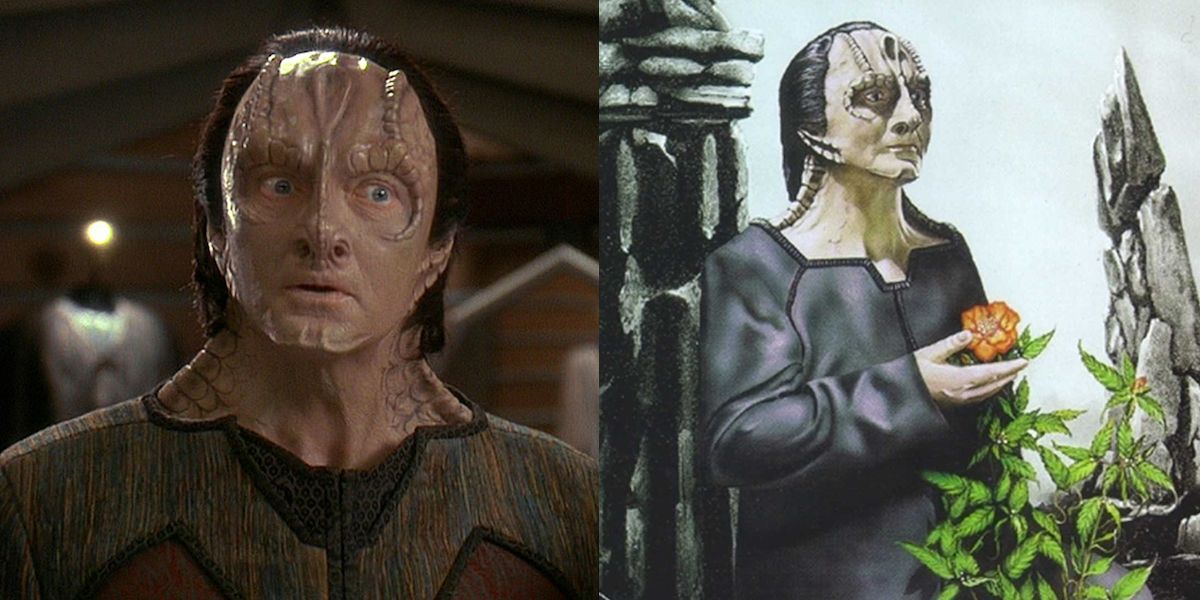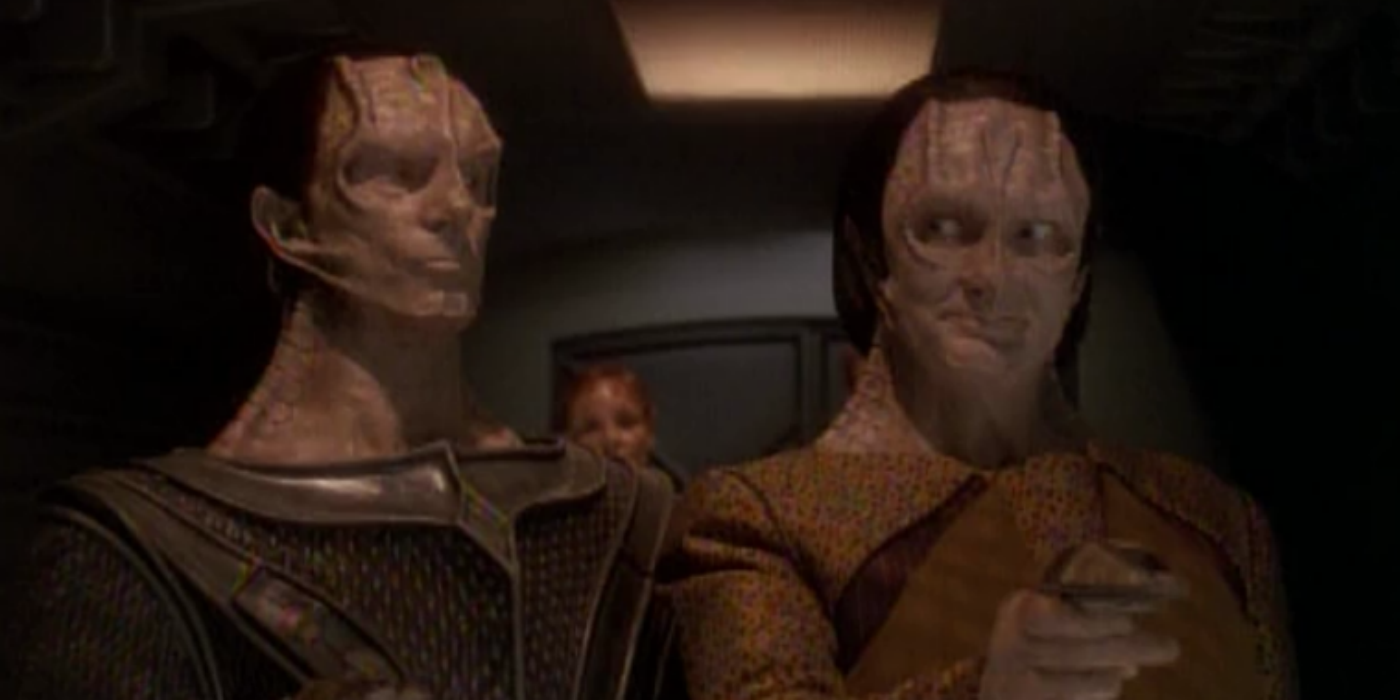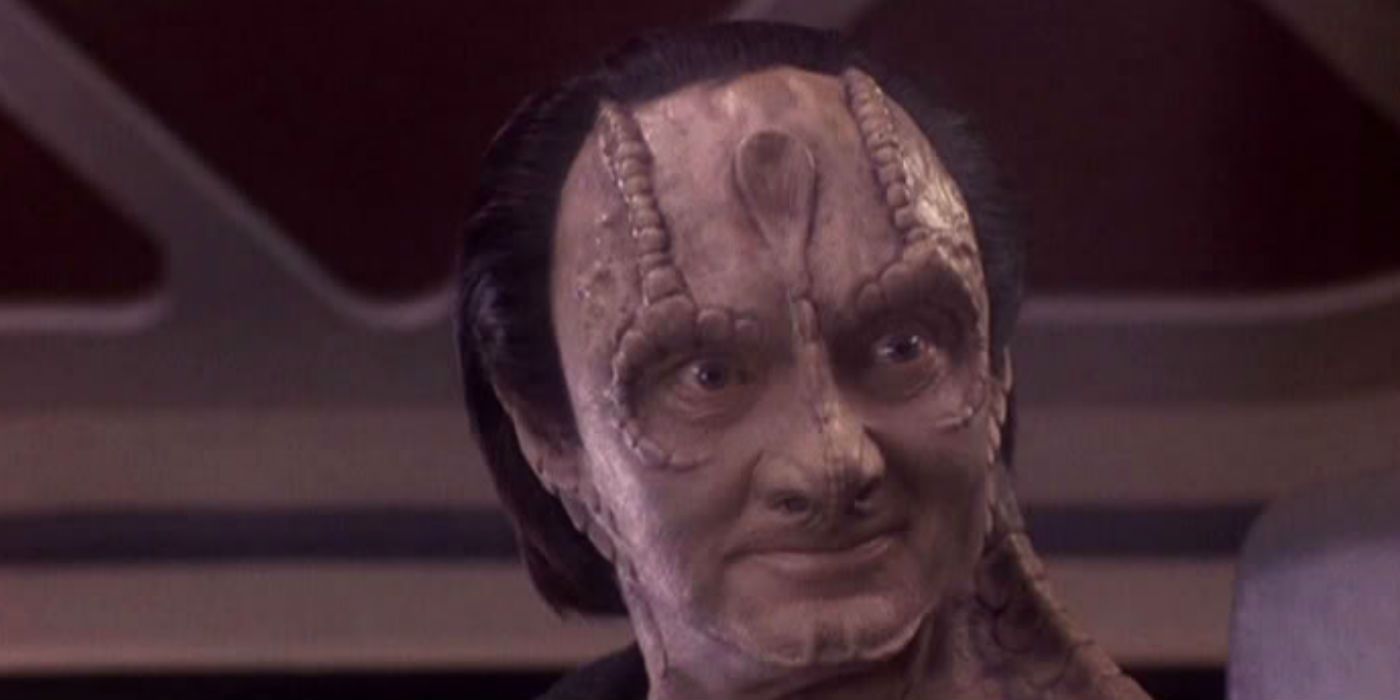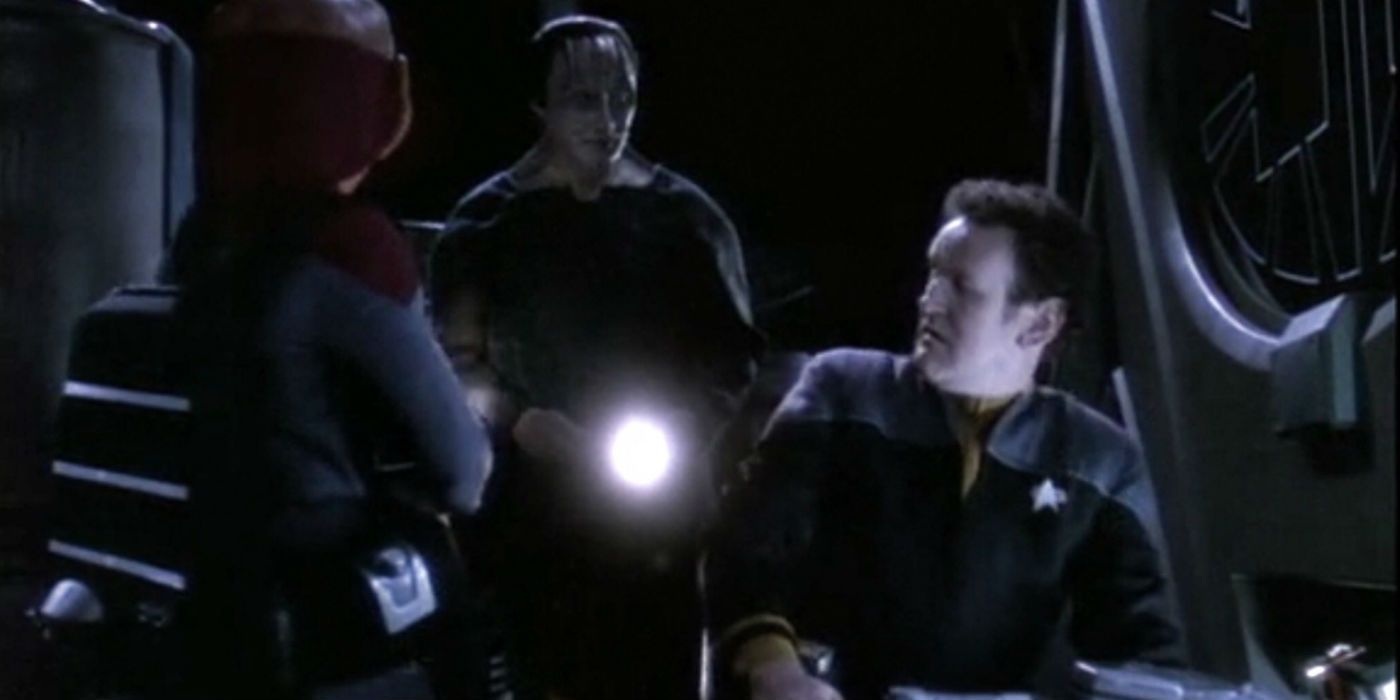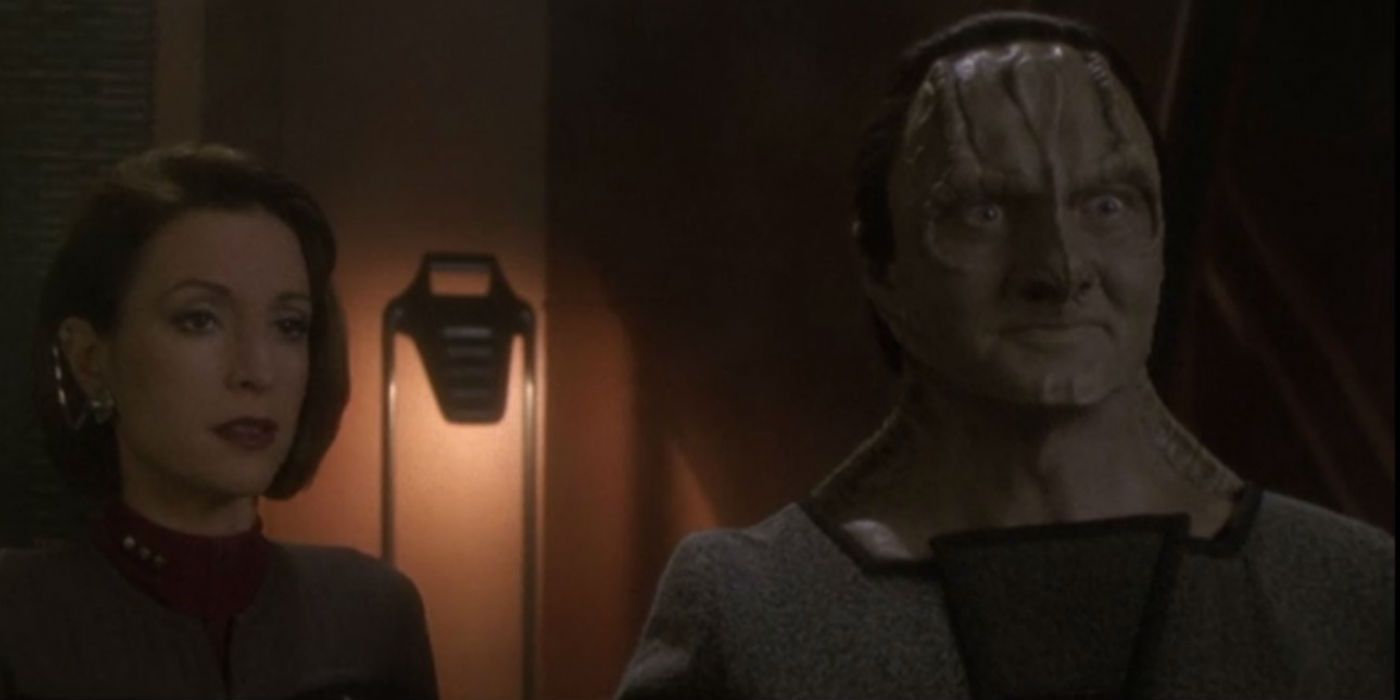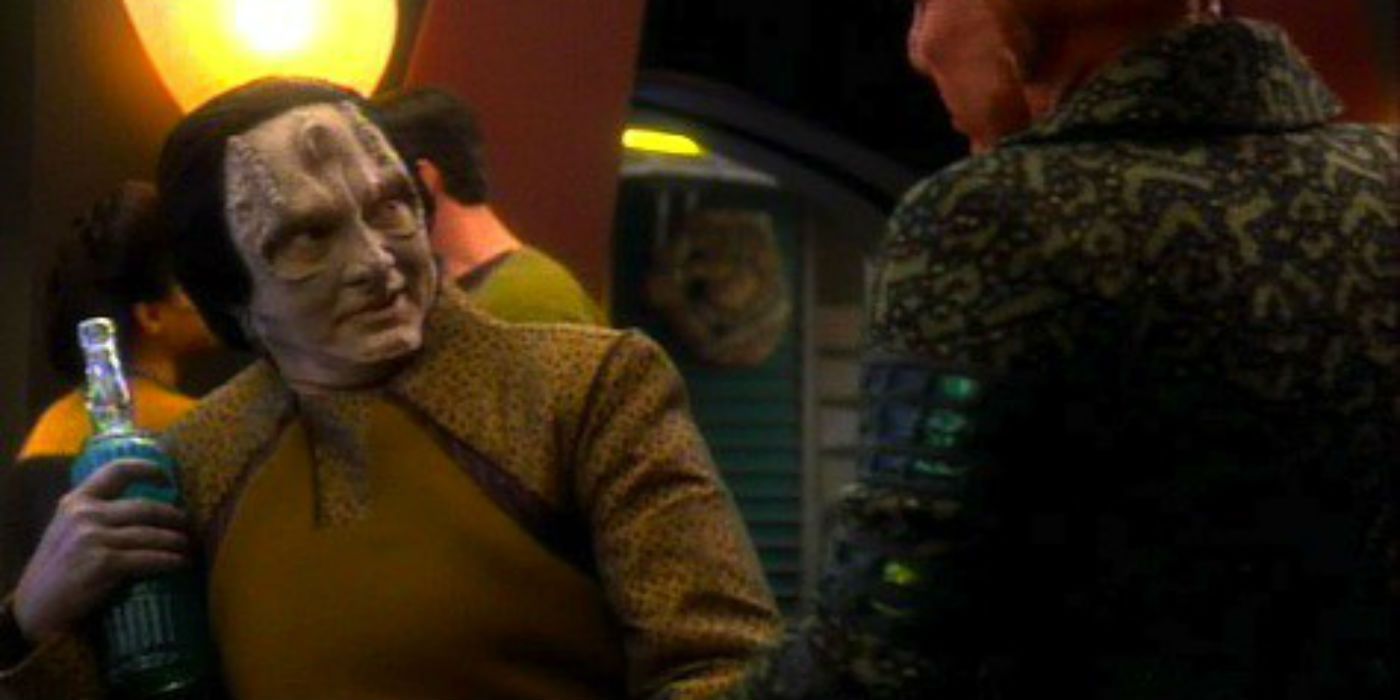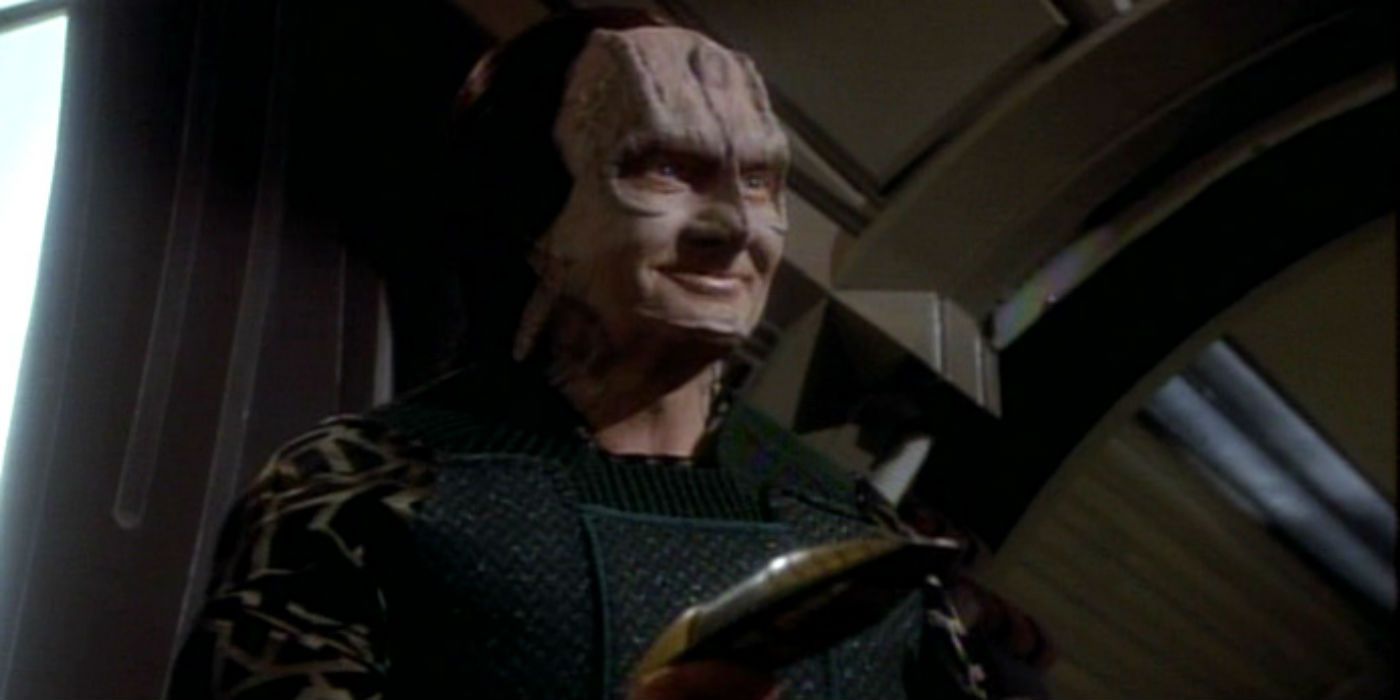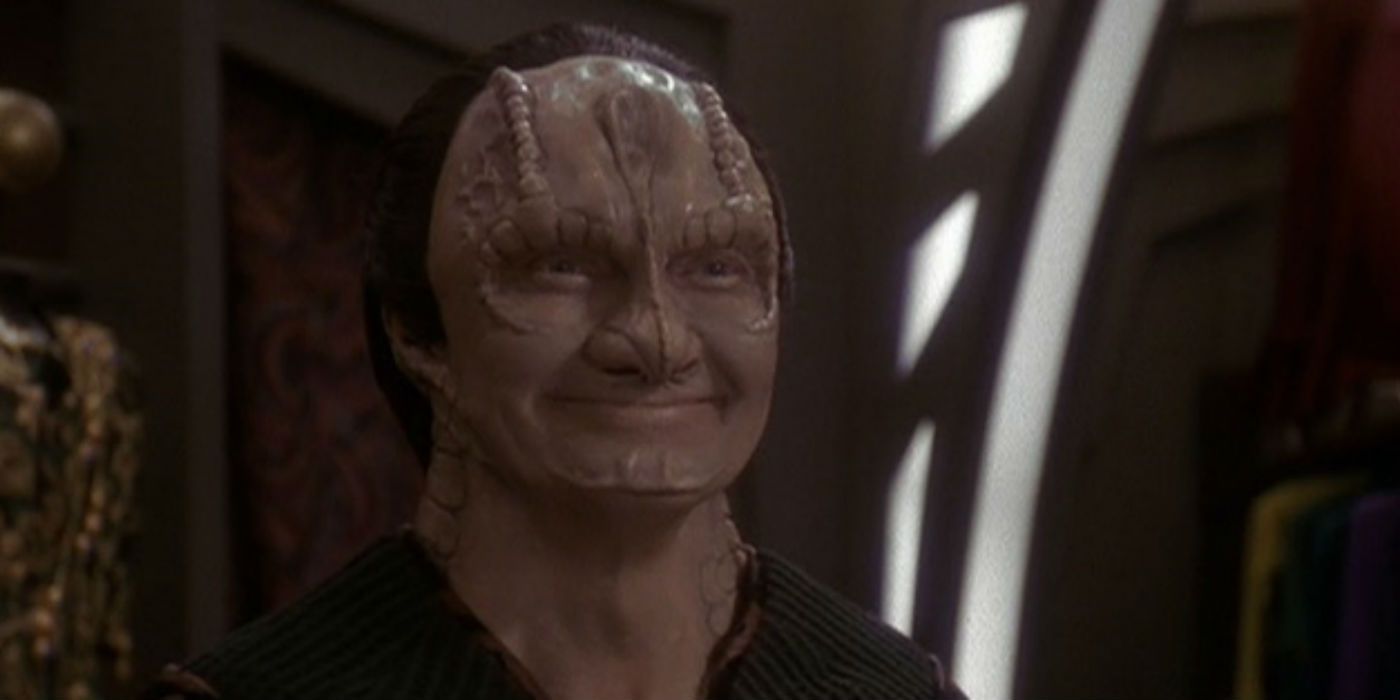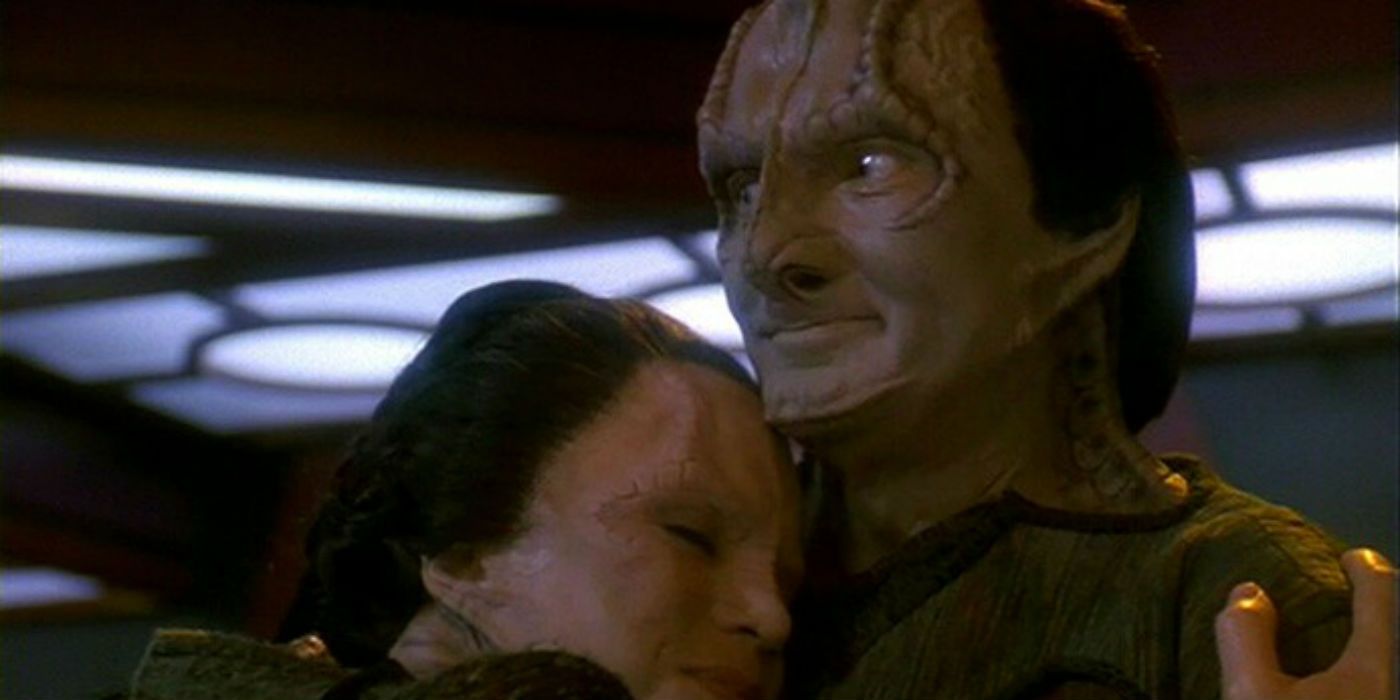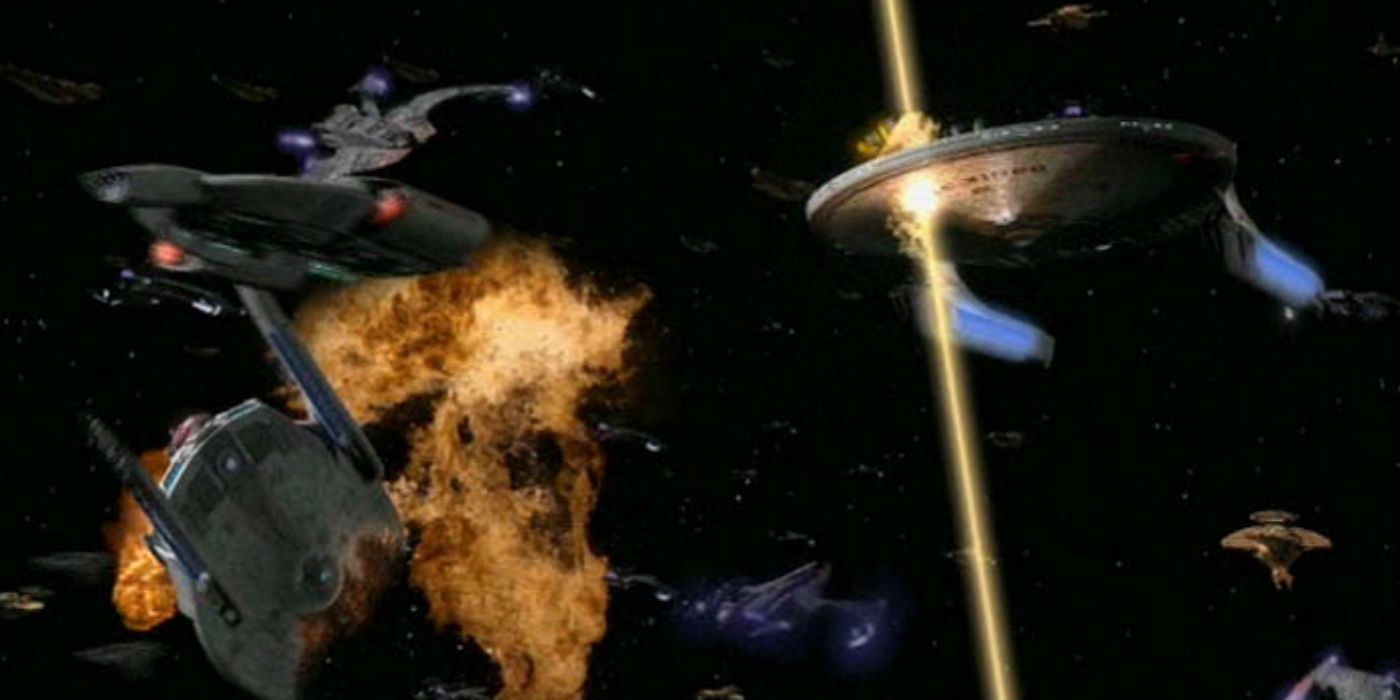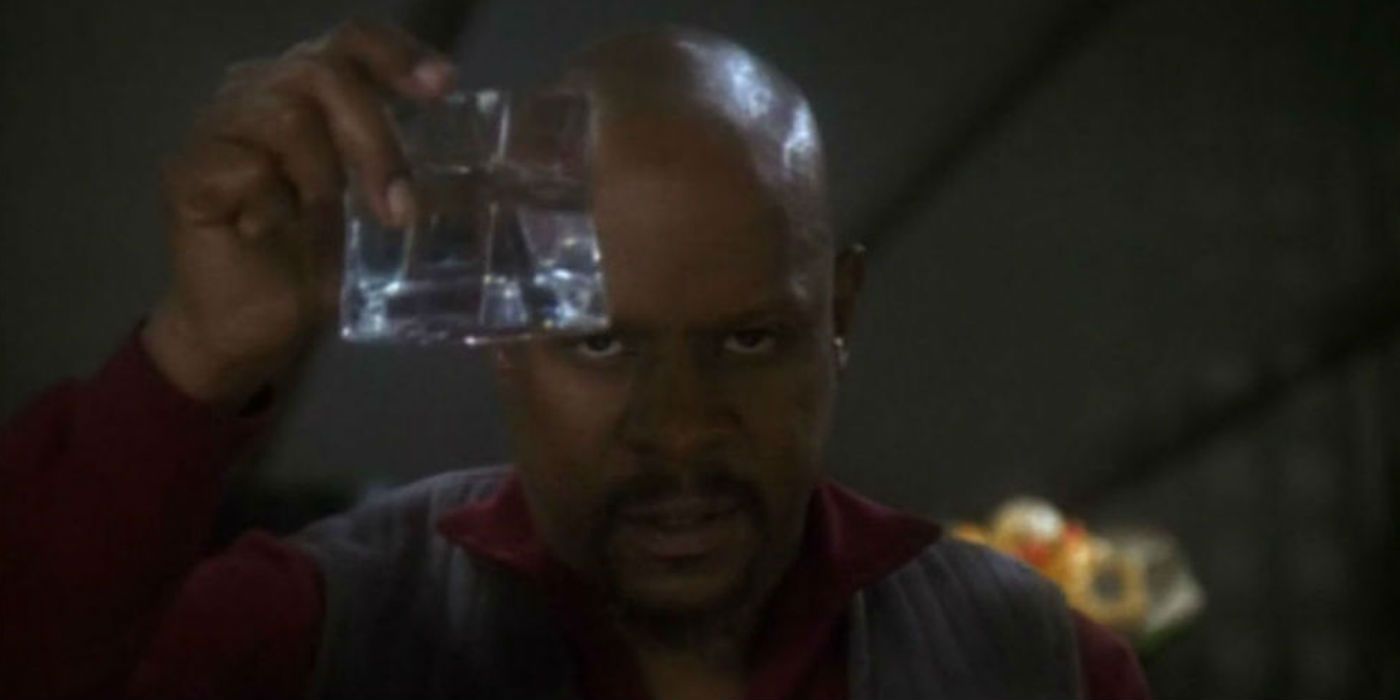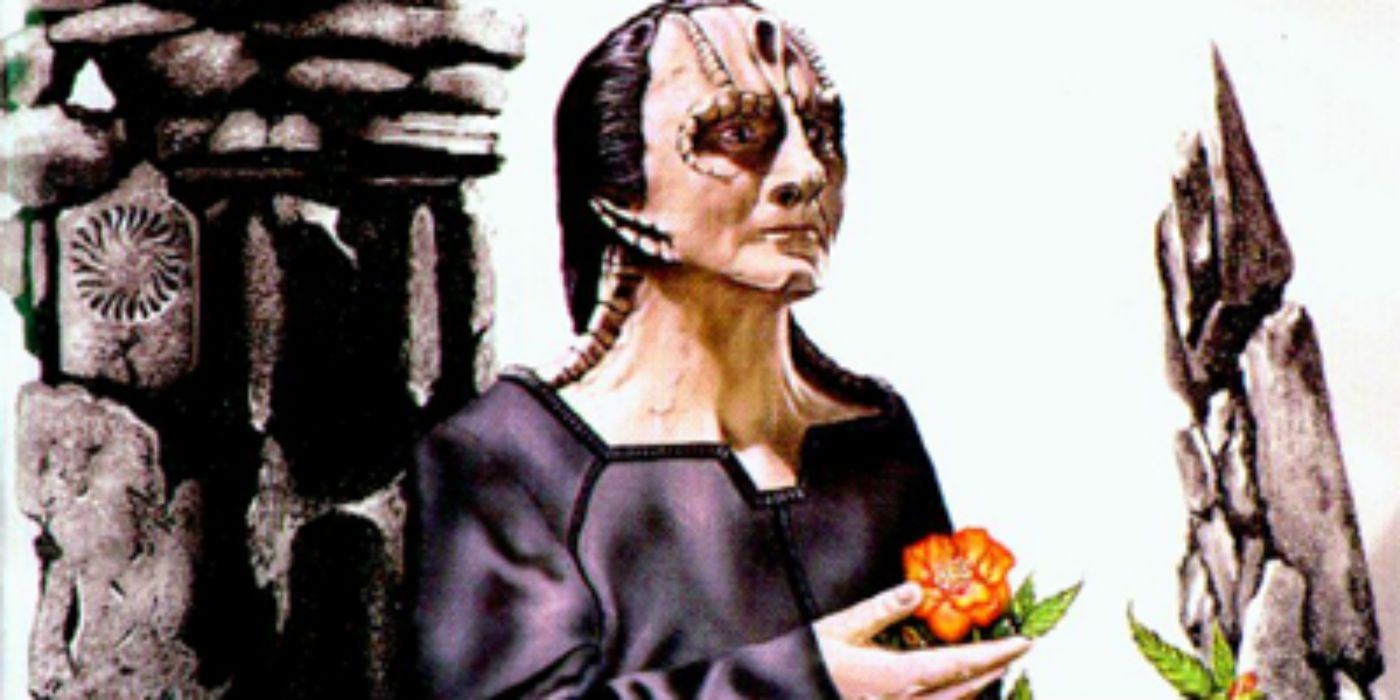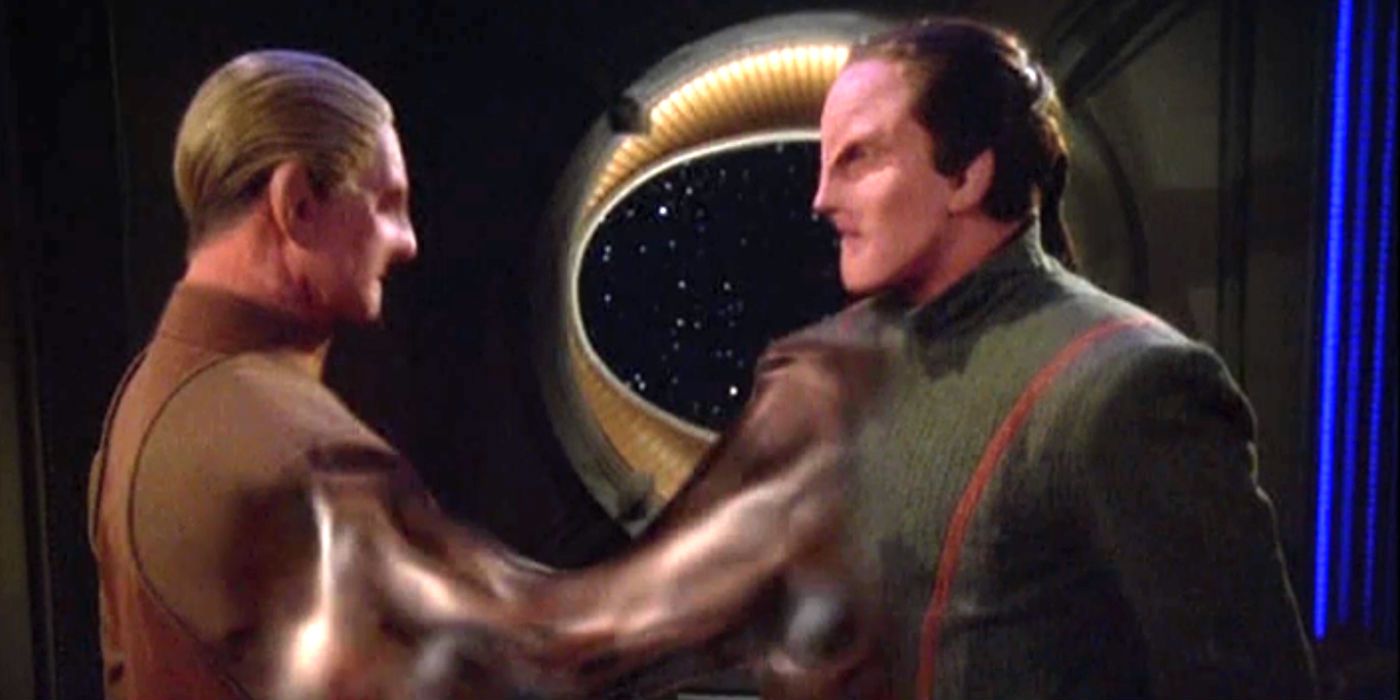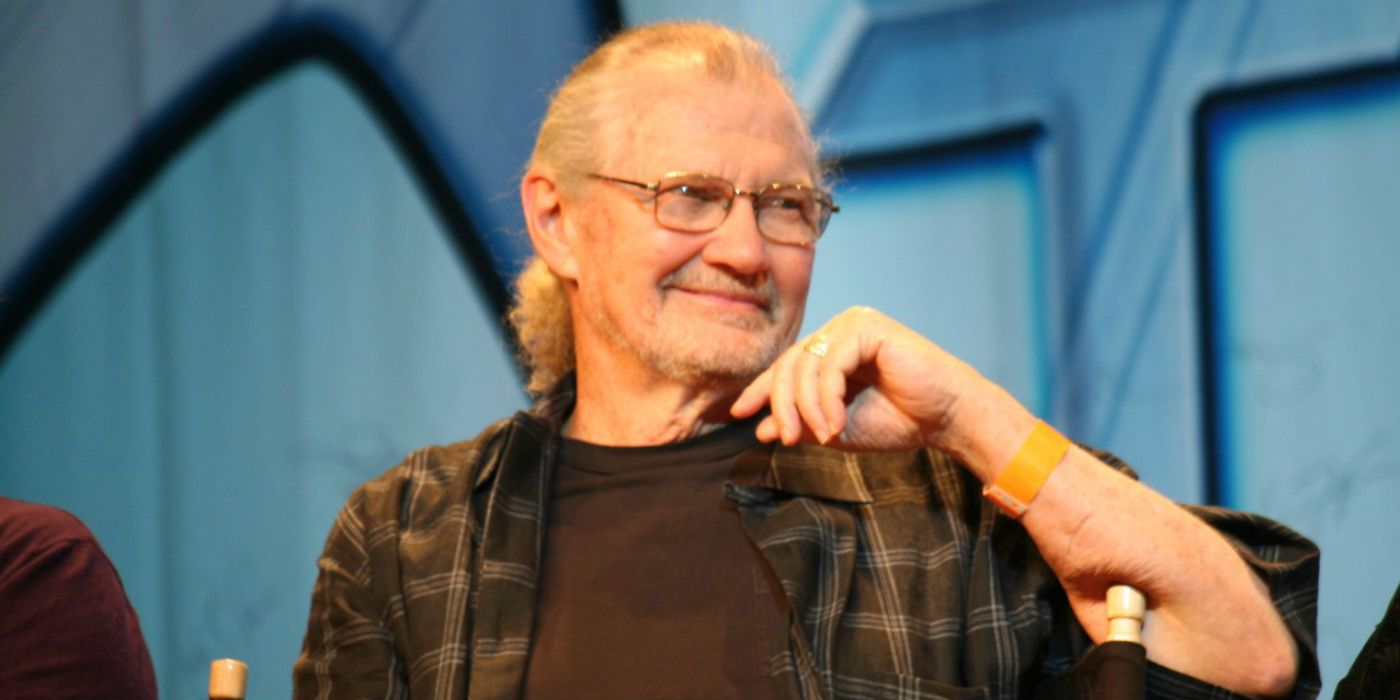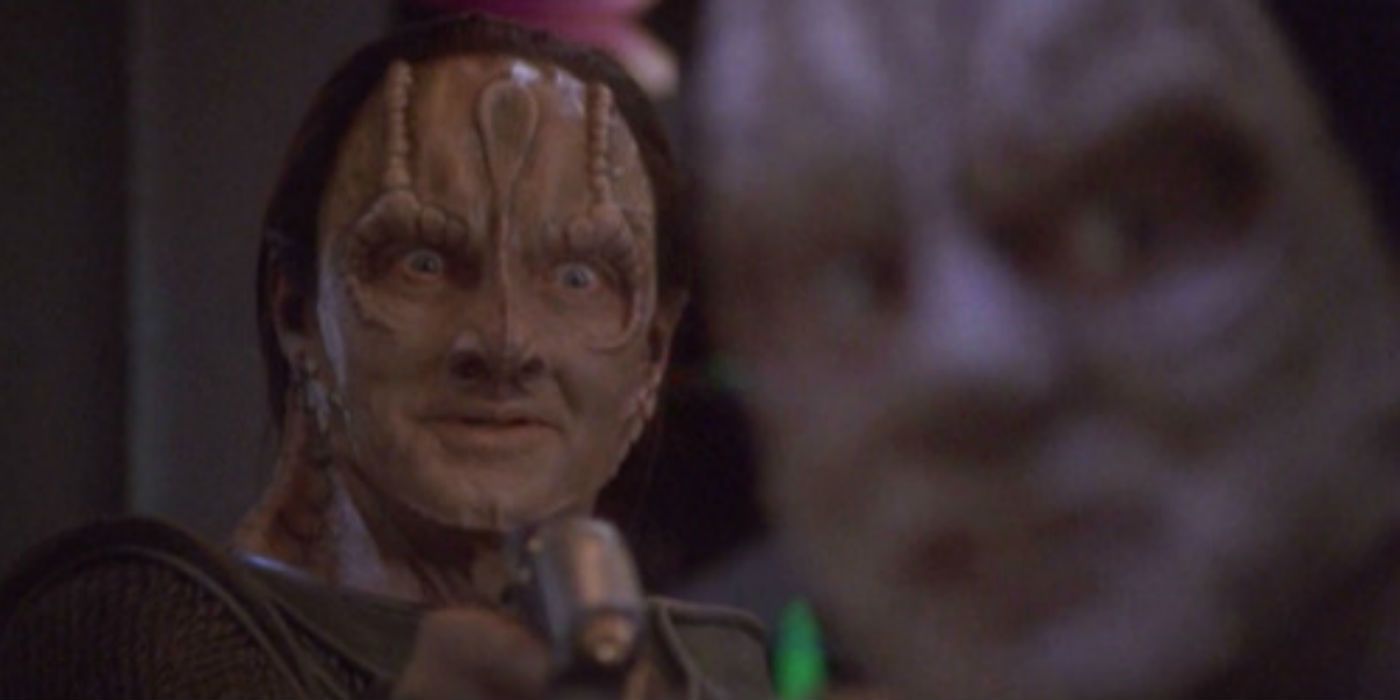Of the thousands of characters Star Trek has produced, none of them were as mysterious or controversial as Elim Garak. Introduced early on in Deep Space Nine’s run, he was a plain, simple tailor who rather blatantly admitted that he was something more. Over the course of the next seven seasons, it was revealed just how much more there was to Garak. He was an exiled spy, an attempted mass murderer, a claustrophobic, an amateur horticulturist, an addict, a heartbroken man, a space cowboy, and the gangster of love.
The fact that Garak was considered a protagonist on the show rankled a section of the fandom. For them, he was the embodiment of everything that was wrong with Deep Space Nine. For others, he was the embodiment of what made the series great—morally gray and complicated. We knew so much about Garak, but still next to nothing. For this list, we gathered behind the scenes information, facts from the series you may have forgotten, and—despite the difficulty—information on who Garak was before and after the series. Thanks to A Stitch in Time, the very rare novel by Garak actor Andrew Robinson, we have answers to many of your questions, though each answer, rather perfectly, leads to a new question. Between that and the difficulty in finding the novel itself, we can’t help but think that Garak himself would like it this way. These are 15 Things You Didn’t Know About Elim Garak.
15. His Sexuality was Debated
The DS9 writer’s room wanted to bring a gay character to Trek, but met resistance from the network. In his early appearances, as the writers still tried to fight for it, there was a question of Garak’s interest in Doctor Bashir (as well as Bashir’s interest in Garak). Andrew Robinson felt that Garak was omnisexual—open to anything and everything—but that many of his desires went unexplored because, as a spy for the Obsidian Order, he had to eschew any sort of love or physical entanglements to focus on his work. During Deep Space Nine, Garak had his tragic love story with Gul Dukat’s daughter, Tora Ziyal, which indicated he was straight or bisexual.
However, in A Stitch in Time, Robinson had the freedom to explore Garak’s sexuality more fully. Robinson imbued Garak with the omnisexual orientation he initially wanted for the character, establishing it fully in the lore. Robinson treated the revelation with class: something that happens to be a part of his character, something that was a matter of course. Garak wasn’t defined by this trait; rather, this trait just added to what was already there.
14. The origin of the mutual hatred between him and Dukat
Garak and Dukat hated each other with a singular passion in Deep Space Nine. When Dukat found out Garak was seeing his daughter, he attempted to kill the tailor, who smiled at Dukat. Elim said that if he was killed, it would only make Ziyal hate her own father, which would still mean Garak won in the end. They constantly threatened to kill each other during the series and hurled spiteful comments back and forth, but the series never detailed why they hated each other so much.
Turns out, Garak killed Dukat’s dad (whoops).
Garak was an interrogator for the Obsidian Order. Papa Dukat was a devoted and beloved father, who, like his son, was more corrupt than Venezuela's government (it is good to have things in common with your kids). Thanks to Garak, Daddy Dukat went to prison and had a nervous breakdown thanks to his interrogation methods. When further “interviewed” for his knowledge, Pop-Pop Dukat attacked Garak, who, being the Prince of Forgiveness that he is, snapped his neck like a twig.
13. Andrew Robinson Influenced the Character…
Andrew Robinson had an incredible amount of creative control over Elim Garak, especially as time went on. Robinson took extensive notes on the character and even wrote journal entries from the character’s perspective to further color in his motivations and backstory. Eventually, those notes and entries became A Stitch in Time. While Deep Space Nine was still on the air, however, Robinson added to the character as well. Much of Garak’s sexual ambiguity came from Robinson, as well as Garak’s darkly effusive smile.
Both Garak and Robinson shared claustrophobia and an amateur love for horticulture. While the claustrophobia was well-explored in the series (to Robinson’s horror), the horticulture was a major component in a section of Stitch, which saw Garak posing as a gardener on Romulus. Naturally, he used the flowers to poison several people, in case you forgot who we’re dealing with here.
12. …but he still disliked some episodes
Robinson loved that Elim was a multi-layered character whose mysteries were never quite answered. You couldn’t believe half of the things he said, so everything about the character needed to be subtext. Unfortunately, you can’t always take the time to give that kind of focus on every character. Throughout the run of the series, DS9 would look in on the Mirror Universe, which is like ours, just reversed like in a mirror. Brilliant. That version of Garak was an obsequious yes-man jellyfish who existed merely to beg for survival and back whoever was in power at the time. While the point of the character may have been to purposely have none of the complexity “our” Garak did, Robinson was relieved when they finally killed Mirror Garak off.
Robinson also disliked the episode “Empok Nor,” which saw Garak dosed with a drug that turned him psychotic. Years earlier, he had played the Scorpio killer (Zodiac killer parallel) in the original Dirty Harry. A rather one-note psycho-killer villain, Robinson spent most of his career trying to free himself of the type-cast, only to have to return to it in DS9. In fairness, Robinson did still play the hell out of the role, even if the episode itself was below average.
11. Garak was never supposed to have an origin
As Elim Garak grew in popularity—who wouldn’t love a murderous spy who lies for fun?—the DS9 writers needed to figure out who he was. The problem was that everyone kept changing their opinion on what it could have been that exiled Garak. At one point, the writers were going to reveal that he was an Oscar Schindler-type who freed Bajoran prisoners; at another, he was going to be the Cardassian Butcher of Budapest. The episode “The Wire” dealt with the writers' indecision of Garak’s background where Doctor Bashir attempts to find out the truth of what happened to him. In the end, while the doctor was able to save Garak’s life, he learned that none of the stories about the tailor synced-up. They were all just lies.
While the writers never intended to reveal Garak’s true past, A Stitch in Time provided the answers, but left Garak in a place where there were new mysteries to solve.
10. Episode "The Wire" wasn't supposed to be about him
Every Garak fan’s favorite episode originally didn’t even have him in it. Originally, the outing was focused on the revelation that Major Kira had been addicted to stimulants since her late teens while she was fighting as part of the Bajoran Resistance. However, given Kira’s prominence in the series—she was the female lead and second-in-command of the station—it was felt that the addiction reveal would compromise the character too deeply. Questions about her decisions would retroactively be asked over the prior two seasons of the series, and would realistically have an effect on the character’s career going forward. So, they gave the addiction to the exiled spy, which isn’t a dangerous concept at all.
Here, the titular Wire was a cranial implant made to temporarily stimulate the pleasure centers of a person who was under torture, used as a measure to keep the subject from talking. Depressed over his exile and dreary future, Garak hacked the device and turned it on permanently. Yep, that doesn’t sound dangerous at all.
9. He was supposed to be a one-off character
Deep Space Nine had a gigantic supporting cast. It had never been done before, and has yet to be done again in the franchise. Garak was created merely as a quick plot point. Deep Space Nine was originally a Cardassian station, and the writers wanted to populate it with a Cardassian who decided not to leave when the military abandoned it. He wasn’t forceful like the other members of his species; he was subtle and textured. He was odd. He was only supposed to be in one episode to give the station “more character.”
Andrew Robinson himself initially took the role just to pay his rent, and wasn’t a fan of the heavy makeup he had to wear, which triggered his claustrophobia. In the end, Robinson enjoyed playing the character, and the writers enjoyed writing him. They developed plans to bring him back, but delayed them until after his debut episode, “Past Prologue,” aired. They didn’t want to introduce a recurring character that fans would hate (Doctor Bashir was deeply disliked in the early years, and the less said about Wesley Crusher and Neelix, the better), which explains the long gap between Garak’s first two appearances.
8. Origins of his smirk
One of the things fans noticed about Garak was that he always had that wide-eyed smirk. He could be on the receiving end of bad news or a vicious beating, and he’d still have that smirk on his face. It’s a pretty innocuous point, but in A Stitch in Time, the smirk is something that has a very specific point.
As an adolescent, Elim was sent to the Bamarren Institute for State Intelligence to take his first steps towards becoming a security operative. It’s like if the CIA had a military school. While there, he met an older girl named Palandine with whom he quickly fell in love. Unfortunately, she was betrothed to Barkan Lokar. Garak was taught by his instructors and by Palandine to hide his emotions behind a smile; that way, people would be confused as to what he’s actually thinking. Garak added that wide-eyed glance as well, which only added to how insane he looked when he wanted to unsettle…which was often.
7. He can cloak himself…sorta
While at the Bamarren Institute, students took part in wilderness hunts in the surrounding desert. Classes were sent out to hunt other classes who had to make it back to the school without being caught. On his first hunt, Garak was quickly caught and put into solitary confinement for an extended period of time, which began his claustrophobia. The second time, things went differently.
Young Garak discovered a Regnar—a small, blind reptilian species. They’re known for their immense calm and ability to camouflage and move only when the wind or a shadow can aid in covering them. He used the reptile for inspiration, finding the ability to hide in plain sight by being very still and “lowering his energy.” It’s an odd retcon to add, considering there’s no explanation for no other Cardassians ever using this ability (despite A Stitch in Time indicating that Garak wasn’t the first person to learn the trick), but hey, maybe the ones who can cloak are like Maris on Frasier—around but never seen.
6. He was almost killed off in "Sacrifice of Angels"
The end of the first Dominion War arc saw Starfleet and the Klingon Empire attempting to retake Deep Space Nine, which had fallen under the control of the Dominion-Cardassian Alliance. Captain Sisko left his baseball and the desk in his office, so there wasn’t an army in existence that would keep him from getting it back. Oh, and his son Jake was still on the station too.
This had been the first time that Trek told a serialized story at this length, or told a war story. It needed something extra on the end to make it feel special, to give the war consequences and to drive those consequences home. They wanted to kill off a cast member, and Garak was the name thrown around the most. It made sense; as the late, great Walter Kovacs once said: “Violent lives end violently.” The problem was, that would almost be accepted. He’s a spy, a soldier, a tailor, a tinker. Showrunner Ira Steven Behr wanted to underline how often innocent people get cut down in war, so Garak lived, but Tora Ziyal, a civilian, died. But Garak lived! Yay!
5. Garak wasn’t in "In the Pale Moonlight"
Like “The Wire,” the original idea—and almost every draft of the episode—for “In the Pale Moonlight” didn’t feature Elim Garak at all. The original idea was for Jake to uncover a conspiracy that would have his father, Captain Sisko, at the center of it, and complicit in a crime. At the time, it was going to be revealed that Sisko had a role in the killing of a Starfleet admiral or a member of the Federation Council who was blocking him from doing something important for the war effort, or that the victim was a member of Section 31.
Eventually, the Romulan plot was added in, and Jake’s role was nixed entirely. The writers felt that the relationship between Sisko and Jake was too strong to damage and shouldn’t be tarnished. Also, if you think about it, how awful would Starfleet Intelligence have to be at their jobs that a journalism student could break open a massive conspiracy? Thankfully, Garak was added, we got his and Sisko’s excellent back and forth, and the best line reading in television history.
4. Garak after DS9
Following DS9, Garak returned home, since everyone who exiled him or cared about his exile was dead. There, he became central in the efforts to rebuild Cardassia. He became a popular figure and eventually became the Cardassian Ambassador, where he used his power to establish a democracy on Cardassia; ironically enough, Garak himself didn’t like democracy and found it to be an inefficient system. But then, when Cardassia’s big, fascist government almost wiped out the entire species, he probably softened to the idea.
Then, with their first vote, the Cardassians elected Garak as their Castellan, proving once and for all that people will throw their vote away on anybody. How awful were the options that the murderous liar is the best choice? God, and we thought we had it bad.
3. Garak, Odo, Martok, Laas, and a Pizza Place
When Deep Space Nine first went into production, Andrew Robinson auditioned for the role of Odo. It’s hard to imagine one as the other; Odo with his gravelly voice and noirish underpinnings compared to Garak’s almost light voice and snobbish humor. Robinson’s voice was a huge part of Garak’s character. It’s somewhat effeminate and silken, but with a threatening undercurrent. Like the rest of him, his voice is anomalous and could be read in many different ways. Robinson was so beloved by the writers that he was cast to play Laas, a one-off character late in the series’ run. Star Trek loved to cast from within; Jeffrey Combs—Trek’s Peter Sellers—once played three different characters in an episode.
However, it was felt that Robinson’s voice was too unique—that fans would immediately recognize him under the makeup. Instead, they again hired from within, giving the part of Laas to JG Hertzler, who was General Martok on the series. His voice was also quite iconic within the series, but Hertzler brought it up several octaves along with changing his posture and episode accreditation to further obfuscate the truth.
2. Robinson After Trek
After Deep Space Nine took its final bow, Robinson wrote A Stitch in Time as well as a Garak-centric short story in Prophecy and Change. Robinson and Alexander Siddig (Doctor Bashir) wrote a stage play called The Dream Box that they used to perform at conventions. (Fair warning: Googling that title will lead to interesting results.) Robinson remained close with Siddig, and he is the godfather to the son Siddig had with Nana Visitor, who played Major Kira on DS9.
After making one-off appearances in television shows and returning to the stage, Robinson retired from acting in 2005 to focus on teaching at the University of Southern California's School of Theatre, where he is the Senior Lecturer and Director of M.F.A. Acting. In 2015, he published his memoir Stepping into the Light: Sources of an Actor's Craft that covers his life through childhood to the mid-1980s.
1. Why Garak was exiled in the first place
We always wanted to know. Andrew Robinson took the risk of revealing the reason Garak was exiled in A Stitch in Time, and, well, it always comes back to a woman, doesn’t it? The incident with Daddy Dukat hadn’t helped Elim’s standing in the Obsidian Order, and things only got worse when it was revealed that Garak was having an affair with Palandine, with whom he had reconnected a few years before. She had gone on to marry Lokar, who was powerful, influential, and abusive. Garak disobeyed orders and went to see Palandine again, which turned out to be a trap set by Lokar. The two fought and, though he was badly beaten, Garak ended up killing him. Unfortunately, this was done in public, and there were witnesses. As a result—and in an attempt to keep the Obsidian Order safe—Enabrain Tain ordered Garak’s exile.
Garak never saw Palandine again; it is largely assumed that she was killed during the Dominion War. Well, that’s kind of a downer, isn’t it? Hey, remember that time Vreenak said “It’s a faaaaaaake?” Yeah, that was funny. Feel better now? We certainly do.
--
Did we leave anything out? How badly do you miss Deep Space Nine? Let us know in the comments.

